 |
|
Watercolour painting by William Frederick Austin - 1884
|
|
Hellesdon Mill
River Wensum |
 |
|
Watercolour painting by William Frederick Austin - 1884
|
|
In Saxon times
there were two mills at Hellesdon but by the mid 1500s only the
mill dam of one mill remained. Operations having ceased, possibly due
to a feud between the Paston family and the Duke of Suffolk. |
When the mill was advertised for sale in 1864 it was one of the biggest mills in the county and was described as being 4 stories high, 245 feet long and 33 feet wide. |
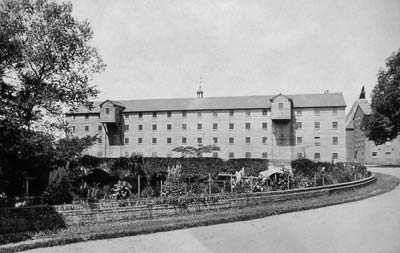 |
c.1905 |
Hellefdon Mills, Norwich, Sept. 20, 1783 |
By AMES and SONS, for ready Money,
TWENTY Thoufand capital double-twill Flour Busfhel SACKS, at 1s.
9d. each; also Twenty Thoufand capital double-twill Five Bufhel Sacks,
at 2s. each, Samples of which may be feen at the King's Head, in the
Market-place, Norwich, every Saturday, and at Hellefdon Mills every Day. N.B. Fine old Rape Oil on the very loweft Terms; Rape Oil Dregs, without Adulteration, for Cart Greafe, at Three Shillings and Sixpence per Stone. Best Ready-money Price given for fine Linen Rags. Norfolk Chronicle - 27th September 1783 |
|
Thomas Jarvis aged 79 of the Parish of Paston fell into the Mill at Hellesdon & was crushed to death, was buried at Hellesdon 10th Septr 1797 Hellesdon Parish Registers - 1797 |
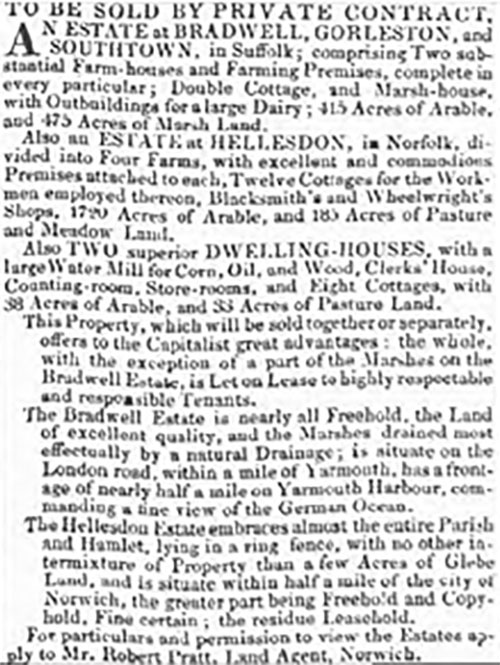 |
Bury & Norwich Post - 29th February 1832 |
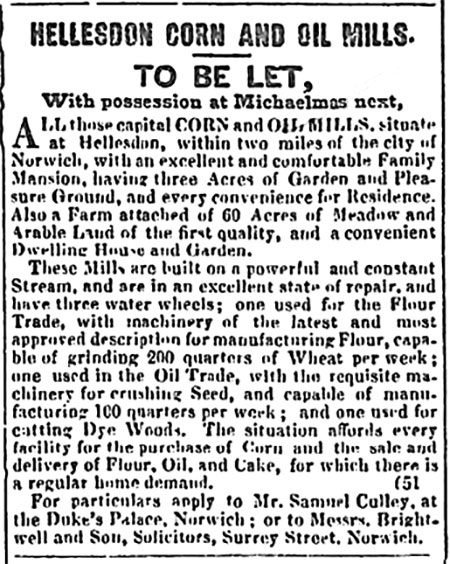 |
Norwich Mercury - 2nd January 1841 |
 |
Newspaper ad - 1861 |
NORFOLK |
….Royal hotel, Norwich on Tuesday the 13th of September 1864 at one for two o'clock in the Afternoon, in one or more lots, the above well known highly important and Valuable Property Lot 1 will compromise the superior newly built WATER MILL, four stories high, 245 foot in length by 33 feet in breadth, situate on the River Wensum, a powerful never failing stream, with four waterwheels, driving fifteen pairs of French Stones with numerous fixed machinery, two counting rooms &c Lot 2 The Capital STEAM MILL fitted with a condensing Steam Beam Engine, by hawthorn, driving six pairs of French stones with numerous fixed machinery, Granaries, Stabling, seven Cottages &c Lot 3 The superior FAMILY RESIDENCE Stabling, Coach house and offices and 4a 3r 9p of Pleasure Grounds, garden &c Lot 4 to 15 will consist of THREE COTTAGES gardens, Pieces of Meadow land, and valuable building Plots for Villa residences, commanding fine views of the River Wensum, Woods of Cossey, Cathedral, Castle and City of Norwich. Possession may be had on completion of purchase. The projected Wensum Valley Railway, passed last session will pass through the Estate, and afford an important direct communication to the North and all parts of the Kingdom. Norfolk News - 10th September 1864 |
|
Joseph Ames and later his son Daniel Ames ran the mill from at least 1788 - 1784. Daniel's son Edward Ames went on to run Stoke Holy Cross mill. The Ames family were also involved with Oxnead mill. |
Joseph Ames was executor to the will of Thomas Spurrell who owned Aylsham_Mill. The will was signed on 26th March 1770 and Thomas Spurrell died shortly afterwards; he was buried in Aylsham on 23rd June 1770. Joseph Ames, described as Gentleman, had possibly met Thomas Spurrell as a near neighbour - Aylsham and Oxnead mills were only a few miles apart on the River Bure. |
| Dr. Alfred Shorter notes that Joseph Ames and Sons of Hellesdon (and also of the Oxnead paper-mill) took an apprentice named Richard Gibson in 1778. Joseph and Daniel Ames and William Parkinson, millers, paper and oil makers, cutters of wood and flock, and fullers, insured the water wheels in the mill in 1779. He also notes that Joseph Ames died in 1784 and the remaining partnership finished in 1804. After this date there appears to have been a long gap before the mill was once again used for the manufacture of paper. In the mid 1850s and 1860s Norfolk directories show that paper was once again made at the mill by the firm of |
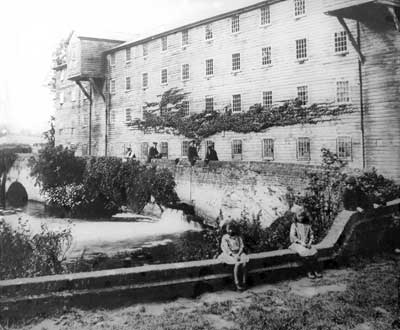 |
|
c.1910
|
 |
Detail from the photo above - c.1910 Cedric Pickett at far left smoking a pipe b.4th March 1877, Shefford Woodlands, Berkshire. He lived in the mill cottages and his job was stated as Waterman at the mill |
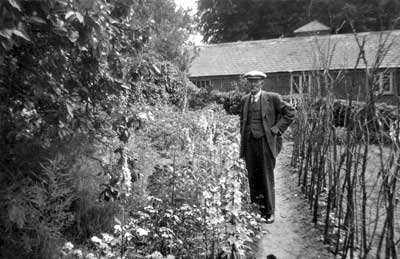 |
Cedric Pickett in his garden of one of the old flint mill cottages c.1950 |
|
Cedric Pickett was employed at the mill as waterman and it is said that he had a voltmeter in his kitchen. Part of his job was to keep a watch on this as it told him the electricity voltage that was being supplied to Hellesdon House. He had to keep the electricity on until 10 O'clock at night, unless the owners had a late party in which case he had to stay up. If the volts started to get to high Cedric would need to slow the water feeding the dynamo. If the volts started to fall below (110 volts I think ) he had to increase the flow. Richard Nudds (Cedric Pickett's great granson) - 30th March 2005 |
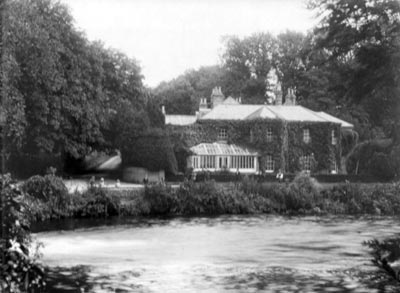 |
Hellesdon Mill House c.1910 Probably taken on the same day as the above photo of the mill, as the same folk appear in both |
|
Hellesdon Mill was run by Joseph Ames, he later went into partnership with his son Daniel and his son-in-law William Parkinson. The first mention we have of Joseph Ames as being of Hellesdon Mills was in 1753 when the Church Inventory for Hellesdon included: "a black herse cloth for burials the gift of Mr Joseph Ames of Hellesdon Mills". Joseph Ames was around in Hellesdon before that and a Joseph Ames was mentioned in the Hellesdon tax records as being the collector in 1716 when he would have been five so it was probably his father. He was obviously a successful businessman as when he died the Norwich Mercury on 31 January 1784 page 2 stated: "Last Saturday... same day died Mr Joseph Ames a considerable miller and flour merchant at Hellesdon near this city". In directories he was listed as trading from the Kings Head in Norwich on Market days. Listed in The British book trades 1775-1787 an index to insurance policies: Ames, Joseph,1779 policy to the value of £ 400, Hellesdon near Norwich, with an unnamed partner who was probably William Parkinson. According to David Stoker's web site on Papermaking he was carrying out that activity at his mill in Hellesdon and the one in Oxnead which he ran with his son Daniel and son-in-law William Parkinson, certainly in his will he mentions having property at Brampton near Oxnead. Stoker mentions that the partnership between Daniel Ames and William Parkinson ended in 1804, Daniel's sons Daniel and Edward went into the same business at Stoke_Holy_Cross but they were not successful, Daniel went bankrupt and Edward drifted in and out of the business. The Parkinsons were non conformists and baptisms took place in Octagon Chapel in Norwich, Joseph Ames was C of E but his son Daniel appears to have been a Methodist, there is a suggestion that Edward was a Quaker (Norfolk Records Society book on the Ames Letters) but apart from being buried in the Guildencroft Burial Ground we have no evidence of this. William Parkinson made a bequest to Edward (of £200) and revoked it with a codicil written the same day! The mills at Stoke Holy Cross had certainly been producing paper by around 1767. According to the book about the Colmans Edward Ames made flour at Stoke Mills but the loss of a child by drowning in the river Tass which runs through Stoke upset him so much that he closed the mill. After a time he again opened it, this time for the manufacture of paper but a visit of inspection by the revenue officer, paper being taxed in those days, so annoyed Mr Ames that he closed the mill again. His brother-in-law Mr John Wright persuaded Mr Edward Ames to reopen the mill by finding him a man who knew how to make mustard and agents to sell it. Apparently Mr Edward Ames didn't take it seriously and treated the matter as a joke, however mustard was made at Stoke mills. At the time of the takeover by Colman he was apparently dealing with flour, mustard and paper. The Ames and Colman families were believed to have been well known to each other. Edward Ames had a daughter called Sarah who was believed to have been engaged to Jeremiah Colman but she died before the marriage. The family remained in contact with the Colmans even after they had moved to Great Yarmouth. |
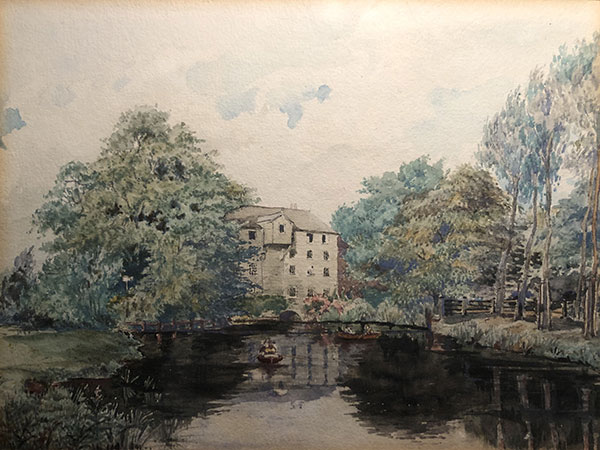 |
Watercolour by Webstein - 1906 |
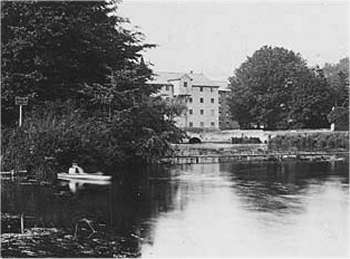 |
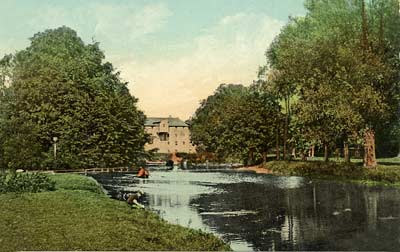 |
|
c.1890
|
Hand
coloured postcard c.1908 |
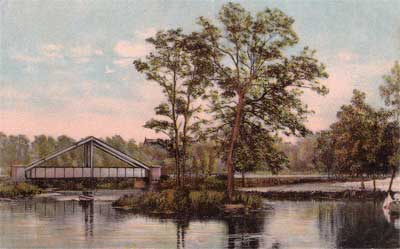 |
Hand coloured postcard c.1910 The M&GN railway bridge was just downstream from the mill |
Early
in the morning on Sunday 28th April 1805 the mill caught fire. The fire
was noticed at about 1.00am and within an hour and a half the mill was almost
totally destroyed. The miller, William Parkinson was faced with fire damage
amounting to between three and four thousand pounds of which, only just
over one thousand pounds was insured with the Norwich Fire Office. However,
the mill was eventually totally rebuilt. |
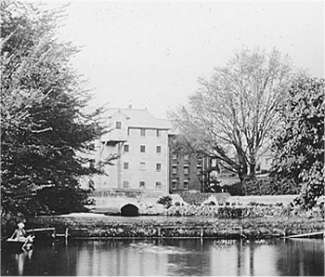 |
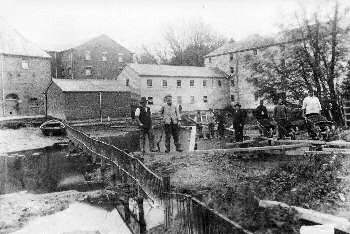 |
|
c.1895
|
Dredging
at the rear of the mill in 1896 by James Hobrough & Son |
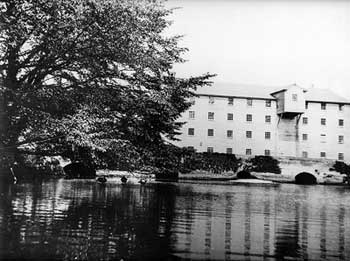 |
c.1900 |
|
In January
1848 William Harrison Wells, formerly of Dilham_watermill, bought the mill from Revd. Henry Berners of Woolverston
Park, Suffolk. By June 1851 the mill and the mill house had been reconstructed
and refitted over four water channels. |
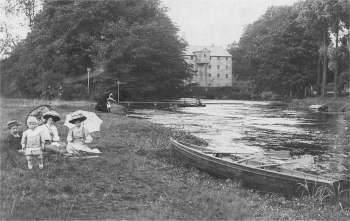 |
|
c.1910
|
Norwich-based Mann Egerton and Company had been awarded a contract to produce the Short Type 184 seaplane, the machine having been designed as a bomber and torpedo-carrier. The company decided to further develop the aeroplane, notably by increasing the wingspan, and this was designated The Mann Egerton Type B. |
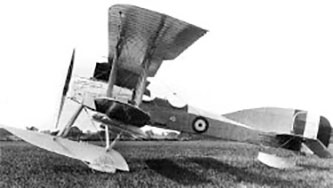 It is not known if this was the exact machine actually involved as there were fifteen built, all for the Royal Naval Air Service. |
On 14th May 1916, Lt. Ormond Hake, 19, and 27-year-old Frederick Sumner, were conducting a test flight. Both men were attached to the Aeronautical Inspection Department of the RFC, Sumner being the Chief Inspector and Hake a test pilot. The route of the test flight took them to Hellesdon House, Norwich, the residence of a Major Berners. Lt. Hake had earlier taken lunch with Major Berners, and a party of guests was still present, playing tennis. The men were described as having waved to the tennis players. Having circled the major’s house, the aircraft was seen to be in difficulties and crashed into an old spruce tree, tearing one of the wings off. The remainder of the aircraft then hit a mill wall and was completely wrecked. Both men were killed. Sumner fell clear before the final impact, but Hake was recovered from the wreckage. At the Inquest Major Berners stated that the aeroplane had flown very near his house, though he did not think the crew was ‘skylarking’. The machine flew into the fir tree, which was nearly bereft of foliage, and he thought the pilot might not have been able to see it against the other trees in the background. The jury returned a verdict of Accidental Death on both men. Lieutenant Hake, from Bournemouth, had joined up from school at the outbreak of the Great War. Having received a commission in the Hampshire Regiment, Hake transferred to the RFC before joining his regiment. He gained his RAeC Certificate in October 1914, and suffered a serious accident at Netheravon, though he was able to resume flying and joined the RFC’s Aeronautical Inspection Department. |
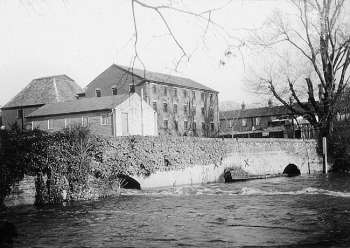 |
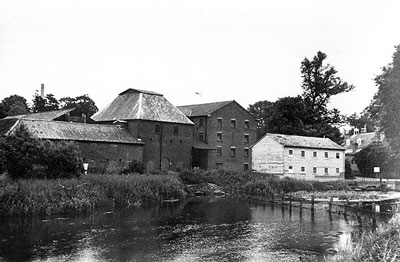 |
|
1951
|
1969 |
| Hellesdon mill
was bought by the Norwich Corporation in 1920, partly because they wished
to control the city water supply and partly because they wished to use
the timber to build houses on the Angel Estate that were required in accordance
with Prime Minister Lloyd George's promise to servicemen that ...homes fit for heroes
would be built after the war. At the City Council meeting of 18th May
1920, it was stated that: |
|
Hellesdon Mill once glory of the county |
Few people now living in Hellesdoncan remember Hellesdon Mill as it was in the early years of the twentieth century. |
|
MIGHTY MILL WAS GIVEN THE CHOP (Picture at top of page) |
If Hellesdon Mill was standing today, no one would dream of pulling it down. But that was the fate of the mighty watermill, pictured here in its Edwardian heyday. The reason? Timber from the superstructure was needed for building work as Norwich faced up to a housing shortage in the wake of the first world war. During the war,Britain's Prime Minister, David Lloyd-George, promised millions of serviceman that "homes fit for heroes" would be built after the end of hostilities. And, sure enough, housing legislation was introduced, leading to a dramatic increase in housing activity. However, it seems that post-war scarcities forced local authorities to look closely at all available building materials. And so it was that housing chiefs at Norwich City Council decided to make use of Hellesdon Mill's timber. The following statement was made at a council meeting of May 18th, 1920: "A commencement has been made in taking down Hellesdon Mill, which consists chiefly of thoroughly good timber, which will be used for housing at Angel Estate." Demolition was a sad end for a mill which had been working since the 17th century. It was rebuilt in the form seen after a fire in the early 19th century. Its four storeys , 66 windows and slate tile roof were imposing and beautiful, as can be seen from this week's picture, from the references of Elm Hill Stamps and Coins, of Norwich. Quite simply, it was one of Norfolk's finest mills. Notice how the surrounds of the mill pool are lovingly cultivated with flower beds. To the side of the mill was a malthouse, and there were also cottages, warehouses, stables, kilns, blacksmith's and carpenter's shops, offices and a mill house. Who remembers this hive of industry? Eastern Evening News - Saturday 9th February 1985 |
|
All that then remained was a small section of the eastern end. By the 1950s the decaying weatherboard had been replaced by corrugated asbestos and the building was in a severe state of disrepair. It was eventually saved and converted into a dwelling. |
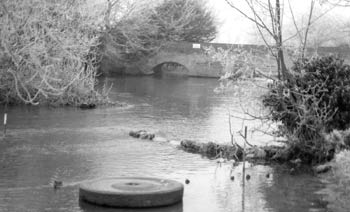 |
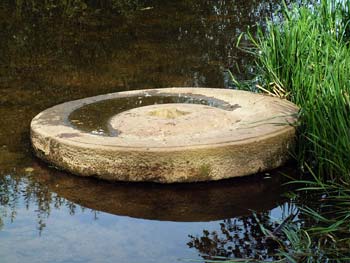 |
c.1960 |
30th September 2002 |
For many years one of the stones lay in the mud near the bank at the southern end of the millpool. The stone appeared to be an edge runner stone, which means it was left over from the days when vegetable based oil was produced at the mill. |
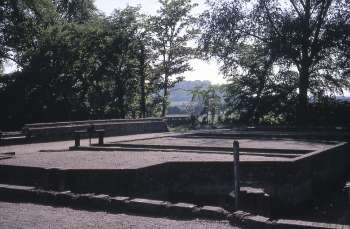 |
|
Mill
foundations June 1968
|
|
On 26th May 1999 the EDP reported that local residents had mounted a campaign to prevent the mill granary and malthouse being developed into 11 flats. |
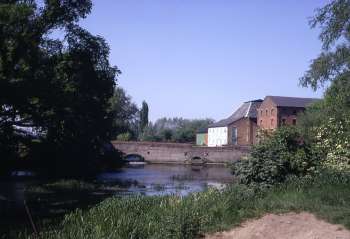 |
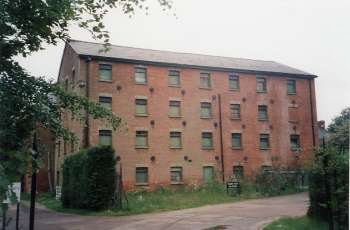 |
|
Mill
site June 1968
|
The
granary with the maltings behind 18th May 1999 |
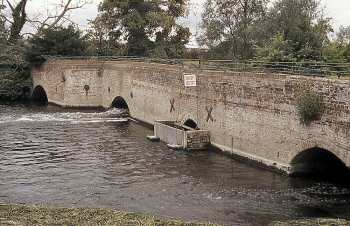 |
|
October
1982
|
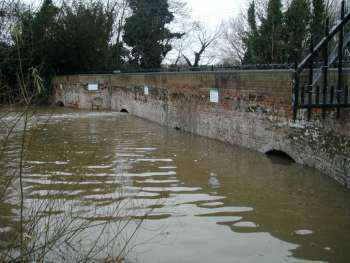 |
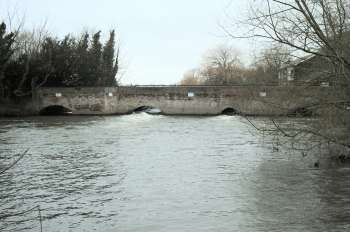 |
|
Wensum
in flood 31st December 2002
|
15th
February 2003 |
In 1959 Frank Larkman stated in the East Anglian magazine that after milling ceased the mill was converted and run as a brewery by Bullard & Sons. |
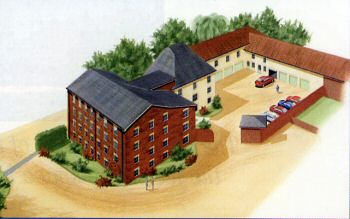 |
|
Watson's
artist's impression of the 20003 conversion
|
|
Residents living close to an old city landmark have mounted a campaign against a plan to redevelop it. |
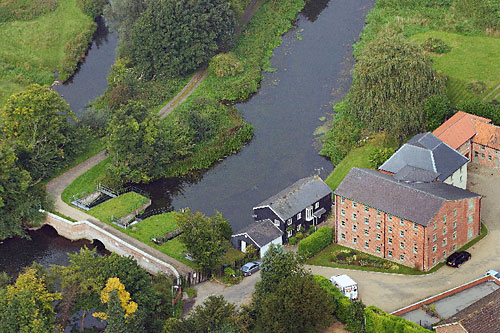 |
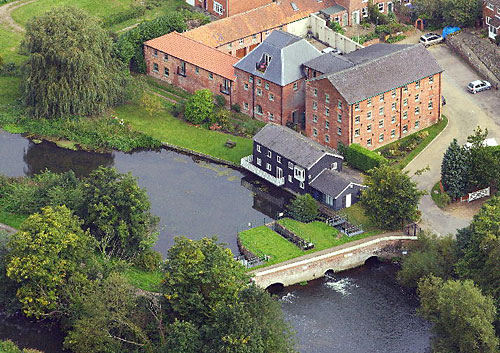 |
17th September 2008 |
|
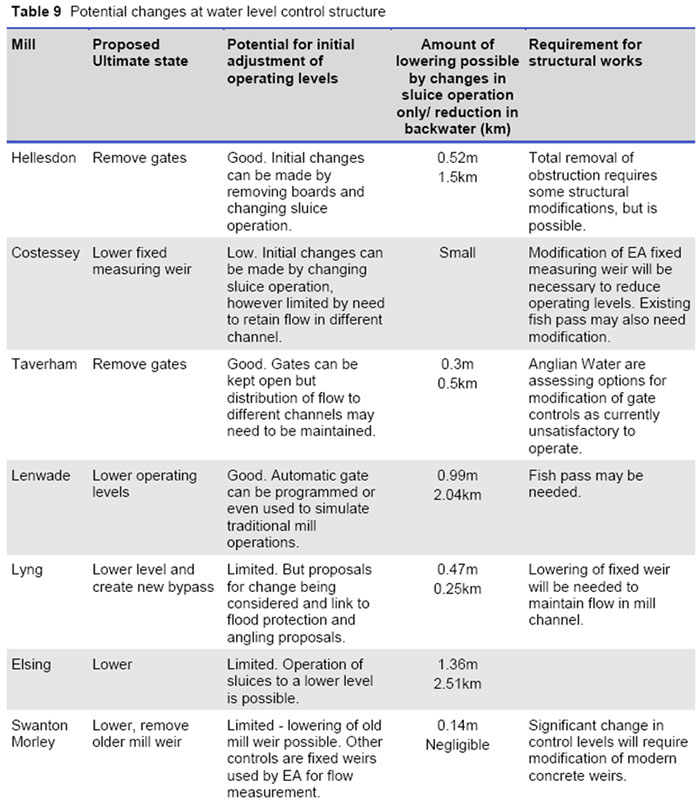
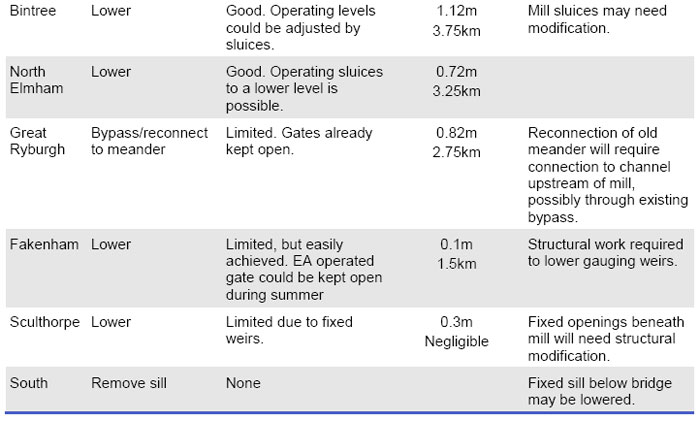
New River Wesum pass to boost
Norfolk's endangered eel population |
Critically endangered eels have been given a lifeline thanks to a new fish pass on a major Norfolk rivers. |
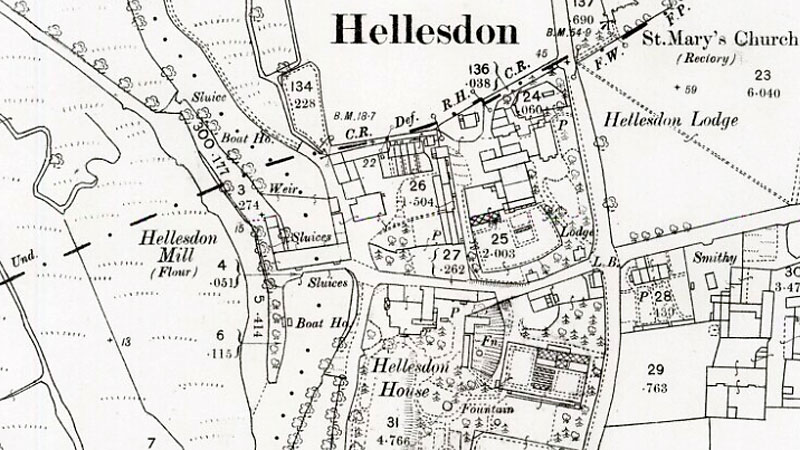 |
O. S. Map 1880 |
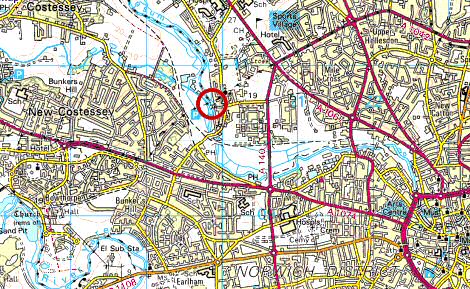 |
O.S. Map 2005 Image reproduced under licence from Ordnance Survey |
| 1042 - 1066:
First mention of mill in Hellesdon 1788: Joseph
Ames & Sons (also of Oxnead mill) took on
Richard Gibson as an apprentice May 1920: Mill
demolished by Norwich City Council |
If you have any memories, anecdotes or photos please let us know and we may be able to use them to update the site. By all means telephone 07836 675369 or
|
| Nat Grid Ref TG19871047 | Copyright © Jonathan Neville 2003 |